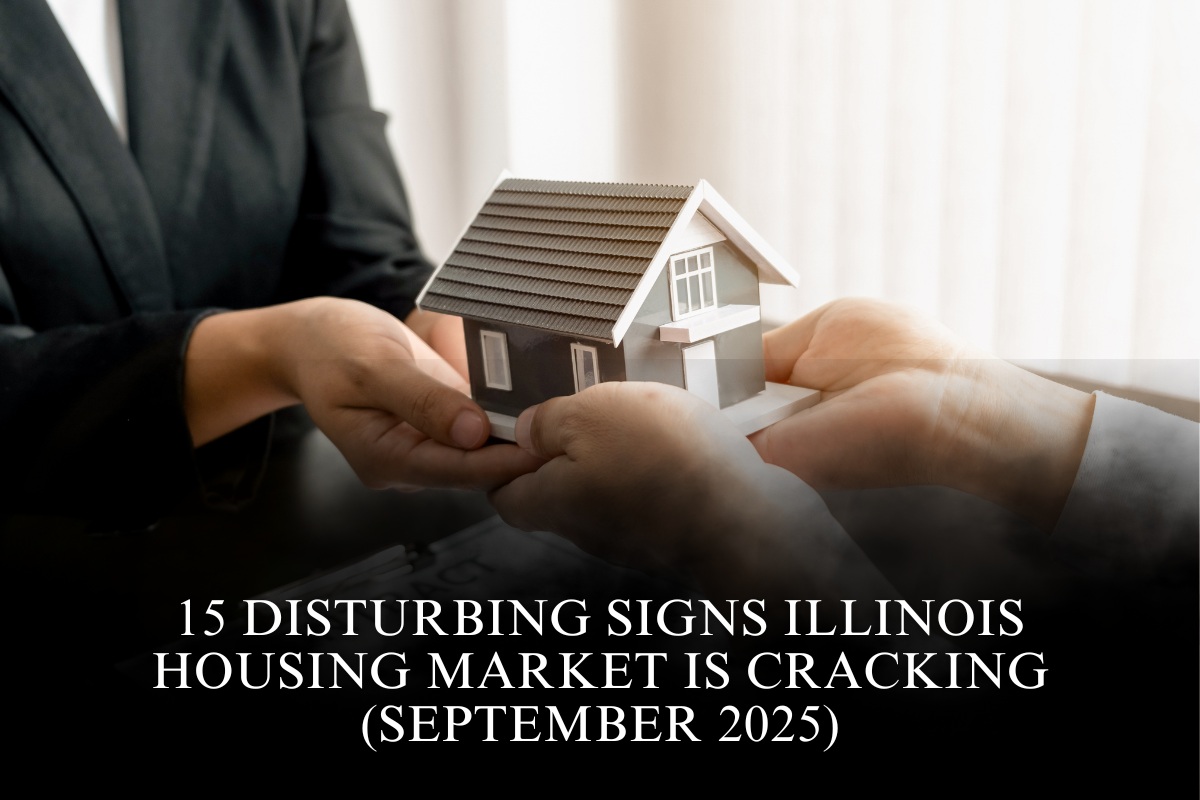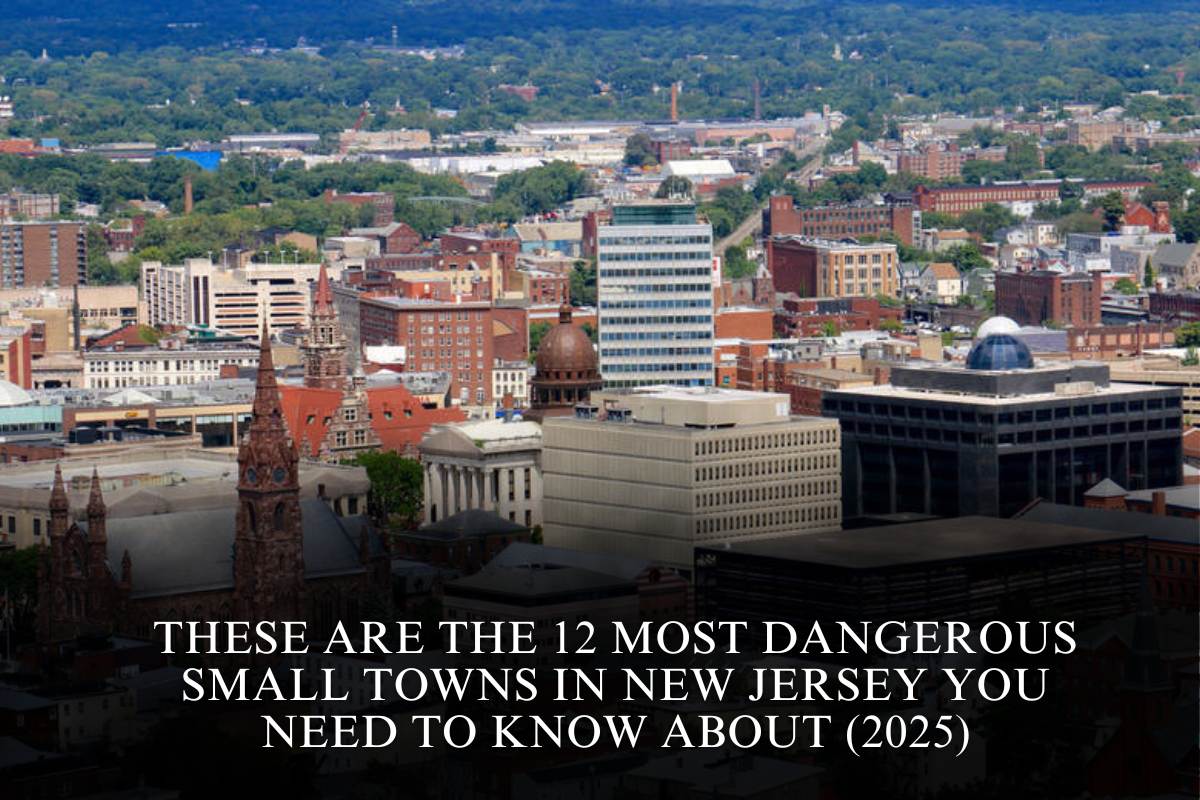The Illinois housing market in 2025 is showing multiple troubling signs that suggest it may be beginning to crack after years of rising prices, limited inventory, and evolving economic pressures. While a full-scale crash like the 2008 financial crisis seems unlikely for the entire state, evidence points to significant weaknesses and warning signals in various parts of Illinois. Here are 15 disturbing signs indicating increasing strain on Illinois’s housing market as of September 2025.
1. Declining Home Sales Volume
Recent data reveals that closed home sales in Illinois declined 4.7% year-over-year in mid-2025, signaling waning buyer activity amid higher prices and mortgage rates. This trend reflects buyers stepping back and reflects tightening demand relative to available listings, an early warning sign of market weakening.
2. Rising Housing Inventory But Slower Movement
Home inventories statewide are inching up, with a 6.1% increase in available homes year-over-year. While more supply can help stabilize prices, it also leads to longer time on market as demand cools, a sign of imbalance where sellers must compete harder to attract buyers.
3. Housing Affordability Crises Escalate
With home prices up 46.2% statewide since 2018 and median home values reaching about $282,573, affordability remains a critical barrier for working families. Mounting prices especially affect first-time buyers, pushing many out of the market and suppressing demand among a large buyer cohort.
4. Sharp Price Increases in Vulnerable Towns
Several Illinois communities like Park Forest and North Chicago have experienced price surges exceeding 100%, making local markets extremely volatile. These overheated areas face higher risks of corrections or significant price drops if demand wanes or financing tightens.
5. Repeated Market Downturns in Specific Areas
Some towns with chronic economic weakness, such as Enfield, have faced multiple housing downturns over the past 15 years. These repeated cycles suggest entrenched vulnerabilities that could lead to further depreciation and distress in these markets.
6. Increasing Foreclosure Rates
Rising foreclosure filings point to homeowner financial distress and potential future market turbulence. Foreclosures increase supply on the market abruptly and weigh heavily on nearby home prices, signaling ongoing economic challenges for Illinois homeowners.
7. Extended Weeks on Market
Homes are taking longer to sell compared to the previous year, reflecting buyer hesitation and increased negotiation leverage. Extended selling times often precede cooling markets and price reductions as sellers adjust expectations.
8. Mortgage Rate Volatility
Mortgage rates hovering near 6.5% to 7% reduce borrowing capacity for many buyers, restricting demand. Rate fluctuations create uncertainty, leading some buyers to delay purchases, contributing to slower market velocity.
9. Slowed New Construction Activity
Although there has been a modest rise in building permits, overall construction growth has slowed. Persistent shortages are exacerbated by high materials costs and labor constraints, limiting new inventory and pushing market pressures onto existing home stocks.
10. Increased Investor Activity Reducing Homeownership
A growing percentage of homes are being purchased by investors, limiting availability of affordable housing for owner-occupants. Investor dominance tends to drive up prices and rents, making market conditions tougher for traditional buyers.
11. Statewide Housing Stock Shortage
Illinois faces a severe housing supply deficit, estimated at needing over 227,000 additional units in the next five years to meet demand. This chronic shortage drives prices and rents up while leaving large segments of the population underserved.
12. Economic and Population Shifts Impacting Demand
Shifts in employment sectors and population migration affect housing demand unevenly across regions. Urban centers and some suburbs see continuing pressure, while rural or struggling communities face declines, creating unpredictability in market performance.
13. Rising Home Prices Amid Economic Uncertainty
Despite general concerns, many Illinois regions still see home prices rising steadily or remaining high, reflecting persistent demand in areas with limited supply, but also creating affordability concerns that could erode deeper demand over time.
14. Stagnant or Declining Rental Market in Some Areas
Rental markets in select Illinois cities show signs of softening as demand falls or renters face cost burdens, potentially reducing investment incentives and destabilizing income streams for landlords.
15. Cooling Buyer Competition
Reports indicate weaker bidding wars and more price negotiations, suggesting a shift toward a buyer’s market environment in parts of Illinois. This shift requires sellers to rethink pricing strategies and could presage wider market adjustments.
While a generalized housing crash in Illinois is not imminent, these 15 warning signs reveal mounting pressures and interrelated challenges threatening market stability. Affordability crises, rising foreclosures, supply shortfalls, and varied regional conditions all paint a complex picture of a market under stress. Buyers, sellers, and policymakers need to remain vigilant and adaptive as Illinois navigates evolving economic realities through 2025 and beyond.
Realistic expectations, policy interventions addressing housing supply, financial stability programs for homeowners, and attention to local market nuances will be crucial to preventing severe disruptions. The Illinois housing market is at a crossroads where cautious optimism must be balanced with preparedness for correcting imbalances amid changing demographic and economic forces.
This comprehensive overview offers a timely insight into why Illinois’s housing market appears to be cracking despite ongoing regional variation and pockets of growth. Stakeholders should monitor these factors closely to mitigate risks and protect housing as a stable asset and fundamental community resource.
Sources
(https://www.noradarealestate.com/blog/illinois-housing-market/)
(https://www.illinoisrealtors.org/blog/illinois-home-sales-fall-while-inventory-and-median-prices-rise-in-september/)
(https://www.illinoispolicy.org/illinois-housing-stock-remains-woefully-low-prices-climbing/)
(https://illinoisepi.wordpress.com/wp-content/uploads/2025/06/ilepi-pmcr-housing-shortage-and-affordability-in-illinois-final.pdf)
(https://www.homestratosphere.com/if-youre-buying-here-watch-your-step-illinois-towns-that-could-see-values-drop/)







